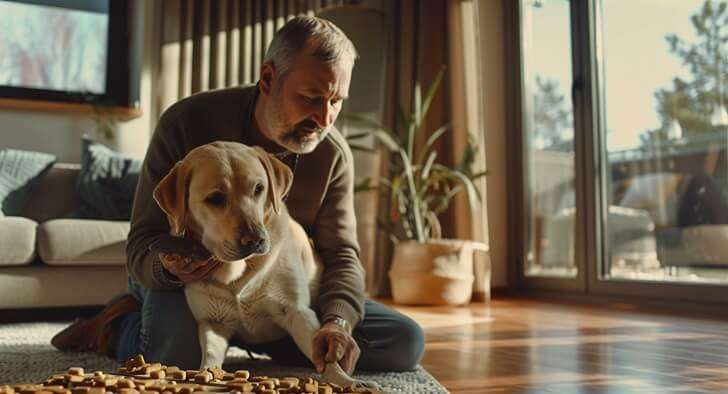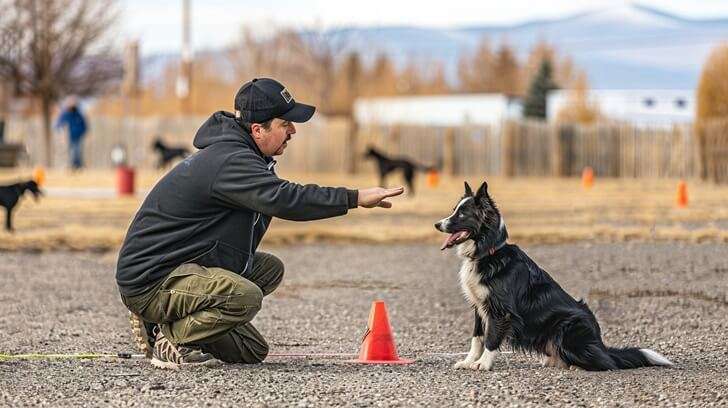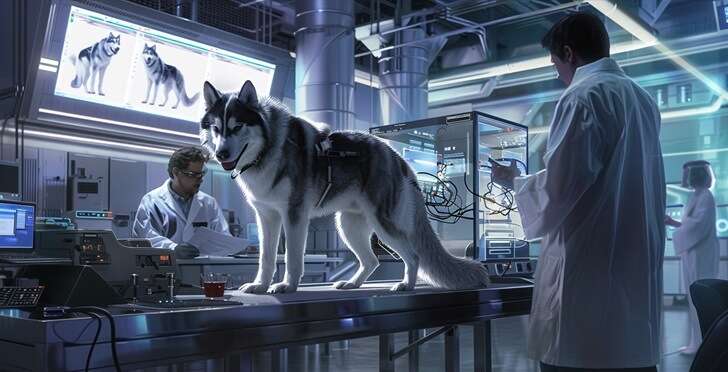
When your dog reaches adulthood, it might seem like the time for training has come to an end. After all, they’ve mastered the basics—sit, stay, come. However, the truth is that continuous training in adult dogs is not only beneficial but crucial for their overall well-being. Many dog owners mistakenly believe that once their pet is trained, they no longer need to reinforce those skills, but this couldn’t be further from the truth. Just like humans, dogs can lose their learned behaviors over time without reinforcement, leading to undesirable habits and even behavioral problems.
Why is continuous training so important for adult dogs? Whether you’re managing behavioral issues or keeping your dog mentally sharp, consistent training ensures a well-balanced, obedient, and happy dog. Training provides mental stimulation, strengthens the bond between you and your dog, and keeps their skills fresh. Plus, it can be an enjoyable and rewarding experience for both you and your furry friend.
In this article, we will delve into the importance of continuous training for adult dogs, why it shouldn’t stop after puppyhood, and how you can make training a regular part of your dog’s life. We’ll also provide practical tips on how to get started, common mistakes to avoid, and how science backs up the benefits of ongoing training.
The Benefits of Continuous Training for Adult Dogs

1. Mental Stimulation
As dogs age, they need just as much, if not more, mental stimulation to stay sharp and prevent cognitive decline. Continuous training provides a way for them to engage their brain, which is essential for their mental health. Just like humans, dogs need to keep their minds active, especially as they grow older. Training offers problem-solving opportunities, challenges their memory, and keeps them alert. Mentally stimulating activities can help delay the onset of canine cognitive dysfunction (dog dementia), a common issue in older dogs.
When your adult dog is engaged in learning new commands or reinforcing old ones, it prevents boredom, which can lead to destructive behaviors such as excessive chewing, digging, or barking. Mental stimulation from training helps dogs feel fulfilled and content, reducing the likelihood of bad habits forming.
2. Reinforces Good Behavior

Dogs are creatures of habit, and their behaviors can deteriorate if not consistently reinforced. Even a well-trained dog may start to slip in their obedience without regular practice. Continuous training ensures that your dog’s good behavior remains solid. Commands like «sit,» «stay,» and «heel» need to be practiced to avoid regression.
Additionally, ongoing training allows you to address any new behavioral issues that might arise as your dog’s environment or circumstances change. For example, a move to a new home or the introduction of a new family member can trigger stress and anxiety in a dog, potentially leading to unwanted behaviors. Regular training helps manage these transitions and keeps your dog’s behavior in check.
3. Strengthens the Bond Between You and Your Dog

Training isn’t just about teaching your dog to follow commands; it’s about building trust and understanding between you and your pet. Regular training sessions provide an opportunity for bonding, as your dog looks to you for guidance and rewards. The act of working together strengthens your relationship, making your dog more attuned to your signals and more likely to follow your lead.
This bond becomes even more important as your dog ages. Training helps establish a consistent communication channel with your dog, which can be essential as they face new challenges, such as decreased mobility or sensory impairments.
4. Physical Exercise
Many training exercises, such as agility or obedience drills, require physical activity that can help keep your dog in shape. Adult dogs may not have the boundless energy of puppies, but they still need regular exercise to maintain a healthy weight and avoid issues such as joint problems or obesity.
Training that incorporates physical movement, like fetching or jumping through obstacles, serves the dual purpose of mental and physical exercise. This can be particularly beneficial for breeds that are prone to weight gain or for older dogs that need low-impact activities to stay active.
5. Increases Confidence and Reduces Anxiety
Training can boost your dog’s confidence, especially in unfamiliar or stressful situations. A well-trained dog knows what is expected of them, which reduces anxiety. For adult dogs, regular training sessions can provide a sense of stability and structure, which is comforting and helps them feel more secure in various environments.
Additionally, consistent training can help shy or nervous dogs come out of their shell. For example, teaching them new tricks or commands in public places can gradually increase their confidence in social settings.
Practical Tips for Continuous Training in Adult Dogs

Training your adult dog doesn’t have to be complicated or time-consuming. Here are some simple steps you can incorporate into your daily routine to keep your dog’s skills sharp and their mind engaged:
1. Start with Short, Frequent Sessions
Adult dogs have shorter attention spans compared to puppies. To keep them engaged, aim for training sessions that last no more than 10-15 minutes. You can spread these sessions throughout the day to keep things interesting and prevent boredom. Consistency is key, so try to work on training every day, even if it’s just for a few minutes.
2. Incorporate Training into Daily Activities
Training doesn’t always have to be a formal, structured event. You can easily incorporate training into your dog’s daily routine. For example, ask your dog to «sit» before you give them their meal, or practice «stay» when you’re walking through doors. Using commands in real-life scenarios helps reinforce good behavior in practical settings.
3. Use Positive Reinforcement
Positive reinforcement is the most effective way to train your dog. Reward them with treats, praise, or playtime when they follow a command correctly. Avoid punishment-based methods, as these can lead to fear and anxiety, making training more difficult. Positive reinforcement strengthens the bond between you and your dog while making training a fun and rewarding experience.
4. Teach New Tricks
Even if your dog has mastered the basics, they can still benefit from learning new tricks. New challenges keep their mind active and provide additional opportunities for mental stimulation. Try teaching your dog advanced commands like «roll over,» «shake,» or even more practical skills like «retrieve the leash.» These new skills will help keep your dog mentally sharp and prevent cognitive decline.
5. Involve the Whole Family
To ensure consistency, it’s important that all members of the household are involved in your dog’s training. Make sure everyone uses the same commands and rewards to avoid confusing the dog. This will help reinforce good behavior more effectively and ensure your dog understands what is expected of them in different situations.
Common Mistakes to Avoid in Continuous Training
1. Inconsistency
One of the most common mistakes in dog training is inconsistency. If you only train your dog sporadically, they may become confused about what behavior is expected of them. Consistency is critical in ensuring your dog retains their training and understands that commands must be followed in all situations. Make a schedule and stick to it, whether it’s once a day or a few times a week.
2. Using Multiple Command Words for the Same Action
Another common mistake is using different words for the same command. For example, saying «come» one day and «here» the next can confuse your dog. Stick to one word for each command, and make sure everyone in your household uses the same terms.
3. Overtraining
While it’s important to practice regularly, overtraining can lead to frustration and burnout in your dog. If your dog seems to be losing focus or becoming disinterested, it’s time to end the session and try again later. Short, frequent training sessions are more effective than long, drawn-out ones.
4. Failing to Reward Desired Behavior
Sometimes, we take good behavior for granted and forget to reward it. Always reward your dog when they follow a command, especially when you’re working on reinforcing old skills. This positive feedback helps reinforce the behavior and encourages your dog to keep performing well.
5. Ignoring Individual Needs
Every dog is different, and not all training methods work for every dog. Pay attention to your dog’s unique personality, energy levels, and learning style. Adjust your training methods to suit their individual needs to ensure success.
Backing Up the Benefits of Continuous Training: Scientific Evidence

Studies have shown that continuous training in adult dogs has significant benefits, not only for behavior but also for cognitive function. Research conducted by the University of Veterinary Medicine in Vienna found that dogs who were continuously trained had better memory retention and were able to learn new tasks more easily compared to dogs who did not receive regular training.
A study published in Applied Animal Behaviour Science demonstrated that regular mental stimulation, including training, helped delay the onset of canine cognitive dysfunction (similar to dementia in humans). Dogs that received ongoing training and problem-solving activities showed fewer signs of cognitive decline as they aged.
Additionally, studies have shown that positive reinforcement methods are far more effective than punishment-based training. Positive reinforcement strengthens the bond between dog and owner and leads to faster, more reliable results.
Conclusion
In conclusion, continuous training is essential for adult dogs to maintain good behavior, stay mentally stimulated, and strengthen their bond with you. The benefits of ongoing training extend beyond simple obedience, contributing to your dog’s physical health, mental sharpness, and overall happiness.
Don’t let your dog’s training stop once they reach adulthood. Whether it’s reinforcing old commands or learning new tricks, training should be a lifelong journey. Start today by incorporating short, fun training sessions into your dog’s routine, and watch as they become a happier, healthier companion.
If you want to learn more about effective training methods or explore in-depth guides, be sure to check out the Dog Trainer Bible, a comprehensive resource designed to help you train your dog with confidence and ease.
